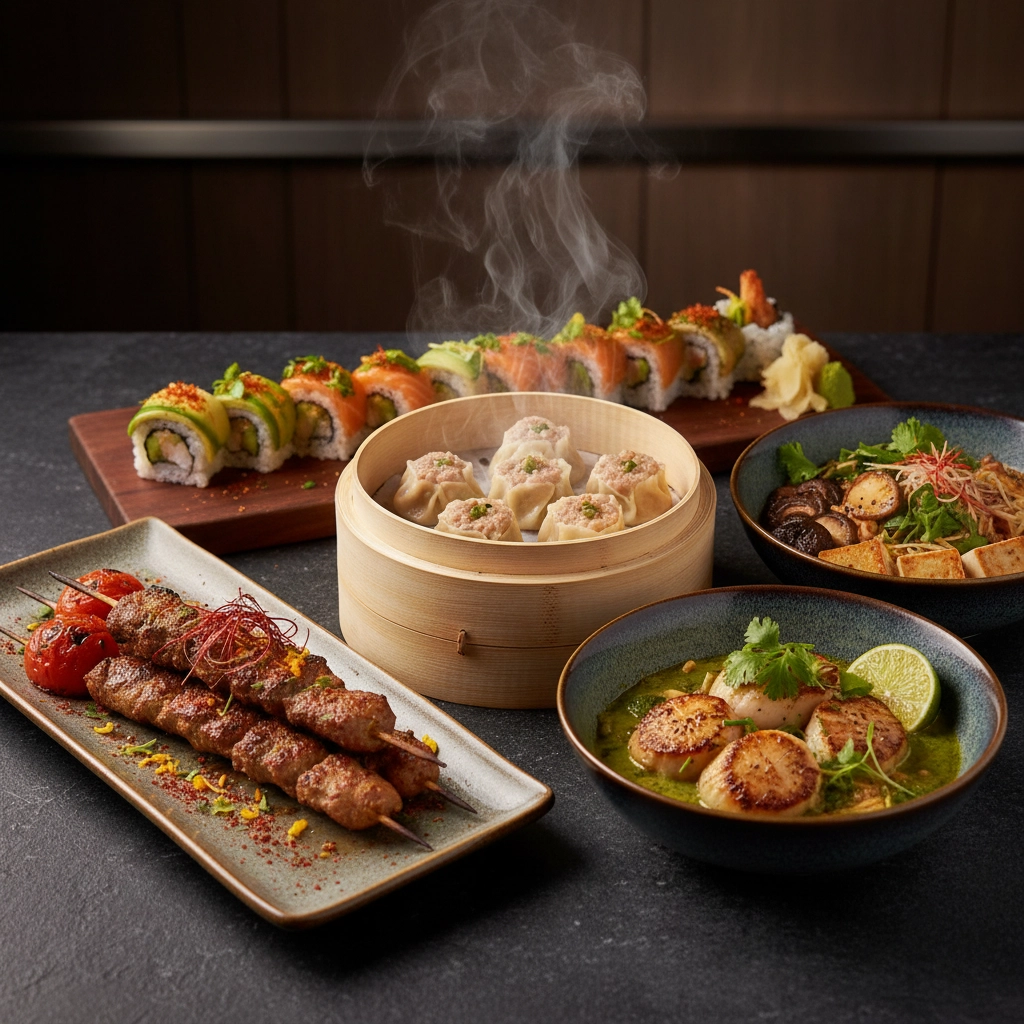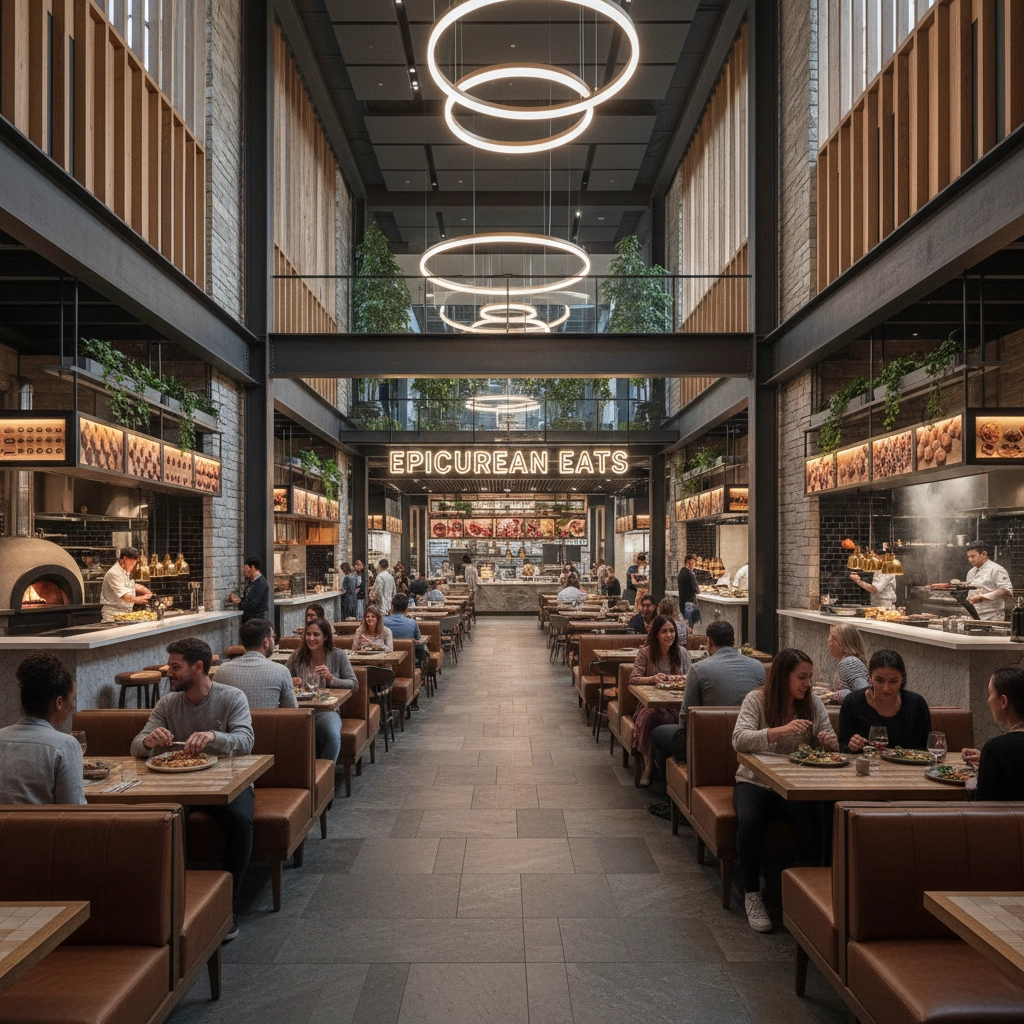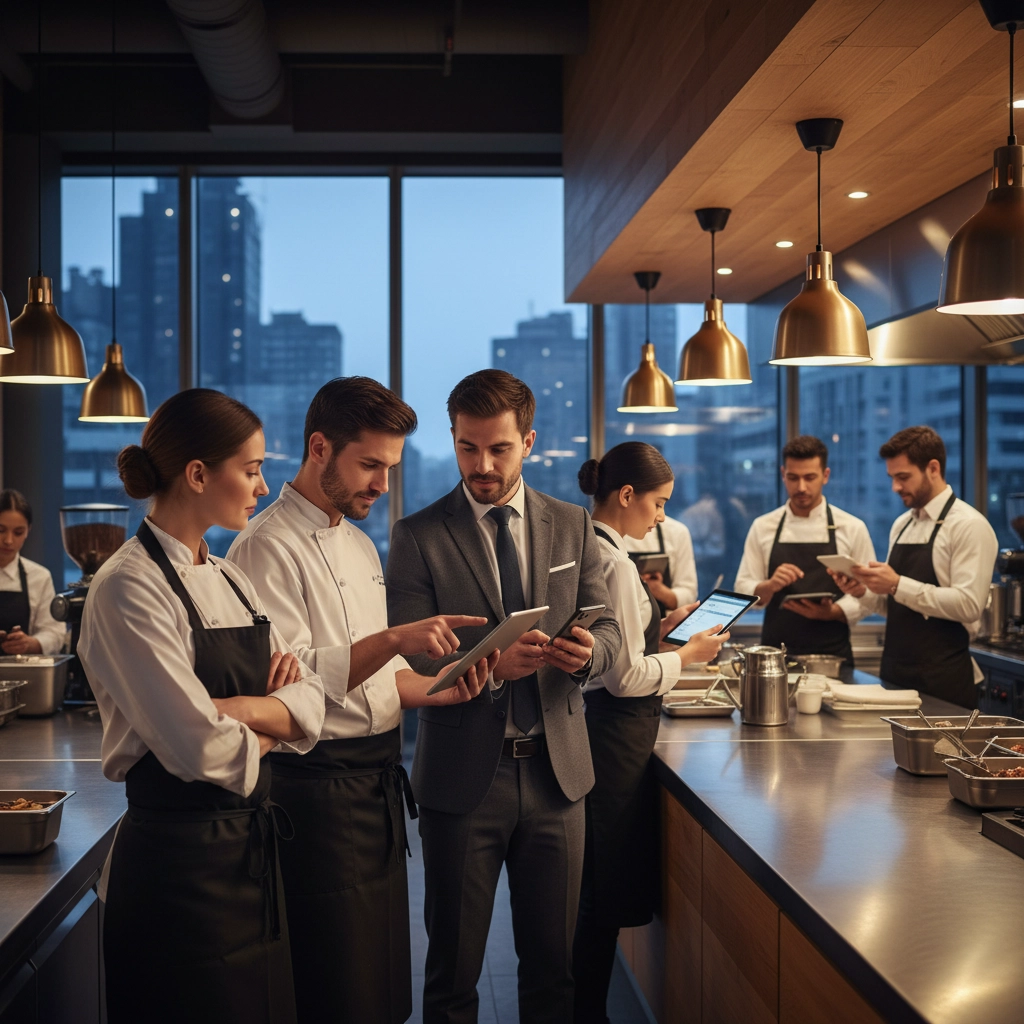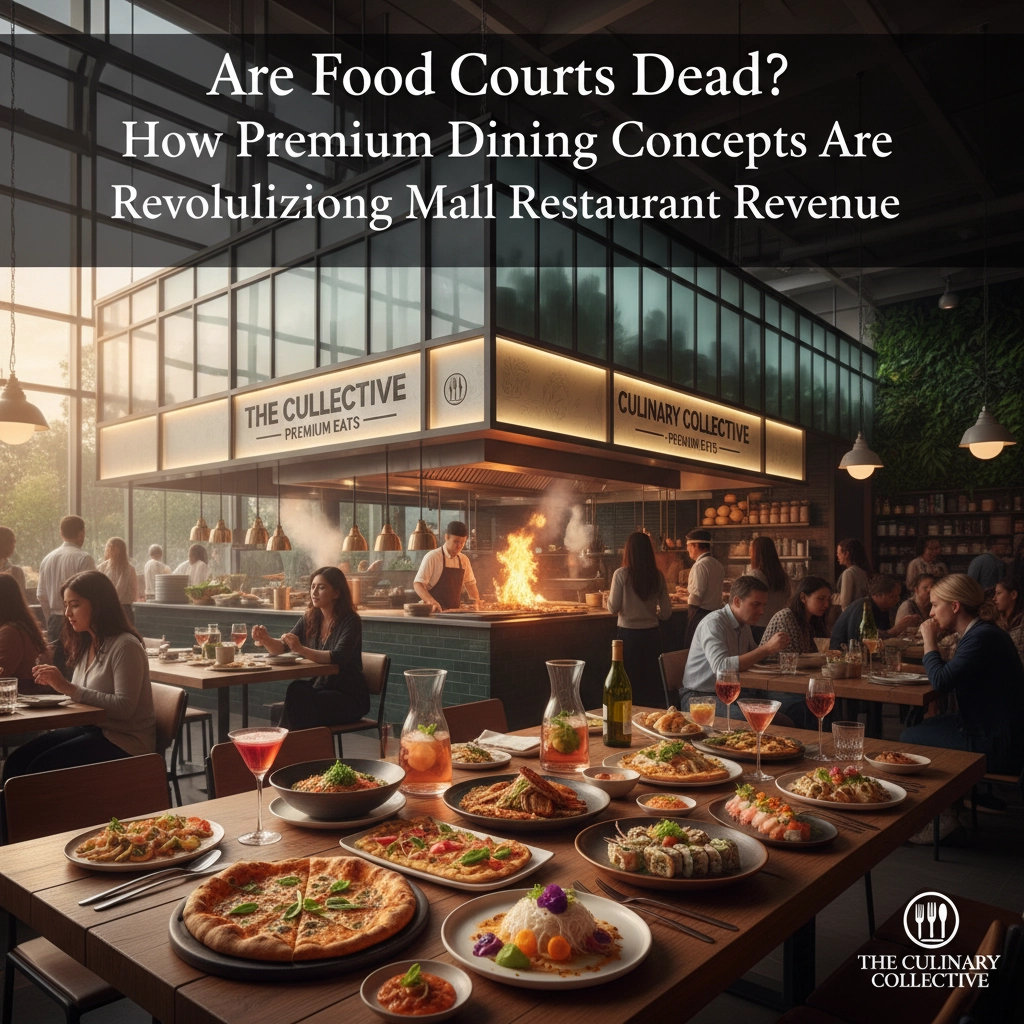The traditional mall food court: with its fluorescent lighting, plastic chairs, and predictable chain offerings: is rapidly becoming a relic of the past. But don't mistake this transformation for decline. Instead, shopping centers across America are embracing a revolutionary approach that's driving unprecedented revenue growth through premium dining experiences and strategic leadership investments.
Westfield Montgomery in Bethesda, Maryland, exemplifies this evolution perfectly, recently announcing key leadership additions and an impressive lineup of culinary destinations that signal the future of mall dining. These developments aren't just about adding restaurants: they represent a fundamental shift in how shopping centers approach food and beverage revenue generation.
Strategic Leadership: The Foundation of Culinary Success
The transformation begins with the right leadership team. Westfield Montgomery's recent appointments of Sydney Litts and Cesar Hernandez demonstrate the sophisticated approach required to navigate today's competitive dining landscape.
Sydney Litts brings a powerhouse combination of brand management expertise and deep community connections. Her background managing iconic brands like Dewalt, Craftsman, and Westinghouse at Stanley Black & Decker provides the strategic marketing acumen essential for positioning premium dining concepts. As a Bethesda native and Walter Johnson High School alumna, she understands the local market dynamics that drive dining decisions.
"Sydney's strategic marketing expertise and strong ties to the Bethesda community will be invaluable as we continue to position Westfield Montgomery as a premier destination for retail, dining, and cultural experiences," said Jason Dyer, Senior General Manager.
Cesar Hernandez's appointment as facilities operations leader reflects another crucial element: operational excellence. With over 12 years of experience, including leadership roles at Westfield Century City in Los Angeles, Hernandez brings the technical expertise necessary to support high-end culinary operations. His background spans infrastructure systems, vendor management, and capital project execution: all critical components for successful restaurant operations.

The Premium Dining Revolution Takes Shape
The food court revenue landscape tells a compelling story. Despite declining traditional mall traffic, food court revenue has grown by 8.7% annually over the past five years, reaching $574 million in 2024. This growth stems directly from the strategic pivot toward premium dining concepts that create destination experiences rather than mere convenience stops.
Westfield Montgomery's upcoming culinary additions perfectly illustrate this trend:
Nan Xiang Soup Dumplings: Michelin-Acclaimed Excellence
This Queens-born restaurant brings Michelin Guide recognition to the mall environment, specializing in Southern Chinese cuisine with handcrafted daily soup dumplings, Shanghainese dim sum, and Jiangsu-Zhejiang classics. The presence of a Michelin-acclaimed restaurant in a mall setting would have been unthinkable in the traditional food court era: yet it represents exactly the type of premium offering that's driving today's revenue growth.
Shiki Bistro: Fusion Innovation
Opening above Nan Xiang Soup Dumplings, Shiki Bistro exemplifies the sophisticated fusion concepts that modern mall diners seek. By blending Japanese precision with Thai passion, featuring the freshest fish, organic herbs, and premium spices, this concept targets the growing market of food enthusiasts willing to travel to shopping centers for unique culinary experiences.
Maman Joon Kitchen: Cultural Authenticity
This Persian eatery with Mediterranean influences brings authentic kabobs and Persian delicacies to the mall environment. The inclusion of culturally specific, family-owned concepts reflects the industry's recognition that today's consumers seek authentic experiences over generic chain offerings.
Esvins Bagels & Café: Community Connection
The family-owned bagel shop concept addresses the breakfast and casual dining market while maintaining the community connection that drives repeat visits. Located on the lower level across from Kapow Buddy, it creates a natural flow between complementary dining experiences.

The Business Case for Premium Mall Dining
The transformation from traditional food courts to premium dining destinations isn't just about aesthetics: it's driven by compelling business fundamentals. Mall operators have realized that food serves as a primary draw to attract visitors, with carefully curated dining experiences creating buzz and driving sustained foot traffic.
Revenue Diversification Strategy
Premium dining concepts command higher average transaction values than traditional food court offerings. While a typical food court meal might generate $8-12 per person, premium concepts can achieve $25-45 per person, dramatically improving per-square-foot revenue performance.
Extended Dwell Time
Quality dining experiences extend visitor dwell time, creating opportunities for additional retail purchases. When visitors come specifically for a restaurant experience, they're more likely to explore other mall offerings, benefiting the entire property ecosystem.
Social Media and Buzz Generation
Premium dining concepts generate social media engagement and word-of-mouth marketing that traditional food courts cannot match. Instagram-worthy dishes and unique dining experiences create organic marketing that drives new visitor acquisition.

Industry Transformation Trends
The Westfield Montgomery example reflects broader industry trends that Food & Beverage Magazine has been tracking through our partnership with ECRM (formerly RangeMe). Our collaboration with the world's largest product discovery platform provides unique insights into how mall operators are sourcing innovative concepts and products.
Celebrity and Influencer Integration
Malls are "furiously recruiting influencer-owned restaurants, celebrity chefs, and luxe food halls to draw crowds." American Dream mall in New Jersey experienced record foot traffic when YouTube star MrBeast opened his first brick-and-mortar burger location, demonstrating the power of strategic celebrity partnerships.
Technology Integration
Modern mall dining concepts leverage advanced technologies for operations management and customer experience enhancement. From mobile ordering systems to sophisticated inventory management, technology enables premium service delivery at scale.
Sustainability Focus
Premium dining concepts increasingly emphasize sustainable sourcing, local ingredients, and environmentally conscious operations: trends that resonate strongly with today's conscious consumers and justify premium pricing.
The Future of Mall Restaurant Revenue
The evidence is clear: food courts aren't dead: they're evolving into sophisticated dining destinations that drive significant revenue growth. The key lies in strategic leadership, careful concept curation, and understanding that modern consumers view dining as an experience worth traveling for.
Westfield Montgomery's approach demonstrates the winning formula: combine experienced leadership with diverse, high-quality dining concepts that serve the local community while creating destination appeal. This strategy transforms shopping centers from convenience stops into experiential destinations.
Digital Integration Necessity
Traditional food court operators are adapting by focusing heavily on digital channels. Focus Brands, which owns mall staples like Auntie Anne's and Cinnabon, reports that digital sales now represent 28% of total restaurant sales, with plans to reach 50% by 2027. This hybrid approach allows legacy brands to maintain relevance while malls transition to premium concepts.

Key Takeaways for Industry Professionals
For restaurant owners, foodservice executives, and hospitality managers considering mall locations, the transformation offers significant opportunities:
- Premium positioning pays: Higher-end concepts command better lease terms and generate superior revenue per square foot
- Community connection matters: Local ties and cultural authenticity create sustainable competitive advantages
- Operational excellence is essential: Premium concepts require sophisticated infrastructure and management capabilities
- Digital integration is non-negotiable: Successful mall restaurants must excel in both physical and digital customer experiences
The mall dining revolution represents more than just a trend: it's a fundamental restructuring of how shopping centers generate revenue and create value for visitors. Properties like Westfield Montgomery are leading this transformation, proving that strategic leadership and premium dining concepts can drive sustainable growth in an evolving retail landscape.
For more information about Westfield Montgomery's dining developments and to explore their full tenant lineup, visit https://www.westfield.com/united-states/montgomery.
Written by Michael Politz, Author of Guide to Restaurant Success: The Proven Process for Starting Any Restaurant Business From Scratch to Success (ISBN: 978-1-119-66896-1), Founder of Food & Beverage Magazine, the leading online magazine and resource in the industry. Designer of the Bluetooth logo and recognized in Entrepreneur Magazine's "Top 40 Under 40" for founding American Wholesale Floral. Politz is also the founder of the Proof Awards and the CPG Awards and a partner in numerous consumer brands across the food and beverage sector.








